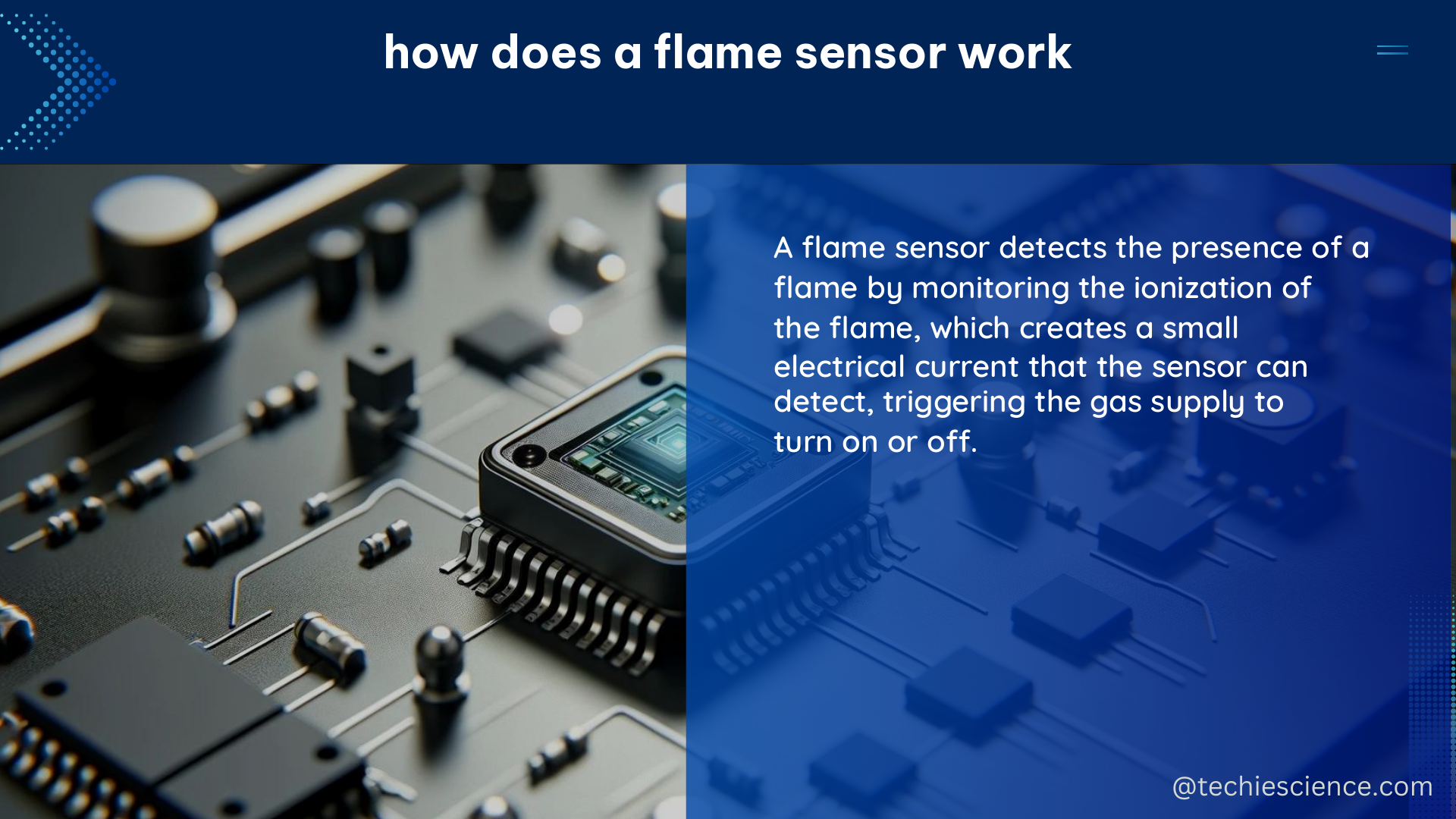A flame sensor is a critical safety device used to detect the presence of fire or flames in various hazardous environments, such as petrochemical processing plants, industrial heating and drying systems, industrial gas turbines, domestic heating systems, and gas-powered cooking devices. These sensors play a crucial role in minimizing the risks associated with combustion and often respond more swiftly than heat or smoke detectors.
Types of Flame Sensors and Their Working Principles
There are several types of flame sensors, each with its unique working principle and advantages. Let’s dive into the details of each type:
Ultraviolet (UV) Flame Sensors
Ultraviolet (UV) flame sensors operate within wavelengths of no more than 300 nm. They detect explosions and fires by measuring the levels of radiation in the atmosphere, with additional radiation emitted at the moment of ignition. These sensors work on the principle that flames emit UV radiation during combustion. However, UV flame sensors are susceptible to false alarms due to other UV sources like lighting, arc welding, and sunlight.
Technical Specifications:
– Wavelength range: Less than 300 nm
– Response time: 3-4 milliseconds
– Sensitivity: Able to detect flames from a distance of up to 50 meters
Near IR Array Flame Sensors
Near IR array flame sensors, also known as “visual flame detectors,” confirm the presence of flames by “reading” near-infrared (near-IR) radiation via the pixel array of a charge-coupled device (CCD). These sensors can recognize specific flame patterns and are less susceptible to false alarms than UV flame sensors. They work on the principle of analyzing the near-IR radiation emitted by flames.
Technical Specifications:
– Wavelength range: 0.7 to 1.1 micrometers (700 to 1100 nanometers)
– Response time: 5-10 milliseconds
– Sensitivity: Able to detect flames from a distance of up to 30 meters
Infrared (IR) Flame Sensors
Infrared (IR) flame sensors operate within the infrared spectral band. When an explosion occurs, hot gases emit patterns in the infrared region, which can be analyzed using a specialized thermal imaging camera. These sensors work on the principle of detecting the infrared radiation emitted by hot gases during combustion. However, IR flame sensors are somewhat prone to false alarms and often feature an inbuilt time delay to mitigate this issue.
Technical Specifications:
– Wavelength range: 3 to 5 micrometers or 8 to 14 micrometers
– Response time: 10-20 milliseconds
– Sensitivity: Able to detect flames from a distance of up to 40 meters
IR3 Flame Detection Sensors
IR3 flame detection sensors measure the modulated elements of radiation only, disregarding background radiation. As a result, they are less susceptible to false alarms than their ultraviolet and infrared counterparts. These sensors work on the principle of analyzing the specific infrared radiation patterns emitted by flames, which are distinct from other sources of infrared radiation.
Technical Specifications:
– Wavelength range: 4.4 to 4.5 micrometers
– Response time: 5-10 milliseconds
– Sensitivity: Able to detect flames from a distance of up to 35 meters
Flame Sensor Detection Mechanisms

Flame sensors work by detecting specific characteristics of flames, such as radiation patterns, temperature changes, or ionization. The detection method depends on the type of flame sensor used:
- UV Flame Sensors: Detect radiation emitted by flames during combustion.
- Near IR Array Flame Sensors: Recognize flame patterns using a CCD pixel array.
- Infrared (IR) Flame Sensors: Analyze patterns in the infrared region caused by hot gases emitted during explosions.
- IR3 Flame Detection Sensors: Measure the modulated elements of infrared radiation, disregarding background radiation.
Maintenance and Troubleshooting
When it comes to DIY maintenance, it’s crucial to ensure that flame sensors are properly positioned and not coated with silica, carbon, or other deposits that might reduce conductivity. Regular cleaning and maintenance can help prevent false alarms and ensure the proper functioning of flame sensors.
Some key maintenance tips include:
– Regularly inspect the flame sensor for any signs of damage or contamination.
– Clean the sensor surface using a soft, lint-free cloth and a mild cleaning solution.
– Ensure that the sensor is properly aligned and positioned according to the manufacturer’s instructions.
– Check the sensor’s electrical connections and replace any damaged or worn-out components.
– Perform periodic functional tests to verify the sensor’s responsiveness and accuracy.
By following these maintenance guidelines, you can help ensure the reliable and accurate operation of your flame sensors, minimizing the risk of false alarms and safeguarding your hazardous environments.
Conclusion
Flame sensors are essential safety devices that play a crucial role in detecting fires and explosions in various industrial and domestic settings. Understanding the working principles, technical specifications, and maintenance requirements of different flame sensor types is crucial for ensuring their effective and reliable operation. By staying informed and proactively maintaining your flame sensors, you can help protect your facilities, equipment, and personnel from the devastating consequences of uncontrolled combustion.
References
- Measuring Flame Signal & Cleaning Flame Sensors
- Wireless Flame Sensors
- How Do Flame Sensors Work?
- Flame Sensing: The Basics
- Flame Sensor: How Does It Work?

The lambdageeks.com Core SME Team is a group of experienced subject matter experts from diverse scientific and technical fields including Physics, Chemistry, Technology,Electronics & Electrical Engineering, Automotive, Mechanical Engineering. Our team collaborates to create high-quality, well-researched articles on a wide range of science and technology topics for the lambdageeks.com website.
All Our Senior SME are having more than 7 Years of experience in the respective fields . They are either Working Industry Professionals or assocaited With different Universities. Refer Our Authors Page to get to know About our Core SMEs.